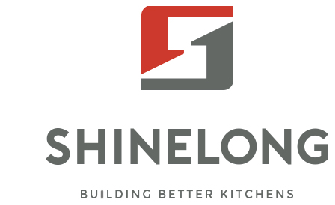News
Designing Functional and Ergonomic Kitchen Furniture for Commercial Spaces
Ergonomic Design Principles for Commercial Kitchen Furniture
Adjustable Workstation Heights for Diverse Tasks
The ability to adjust workstation heights makes all the difference when dealing with the wide variety of tasks found in commercial kitchens, making things both more comfortable and efficient for staff. Customizable height options let these work areas adapt to whatever the day brings, whether someone is chopping ingredients, flipping burgers, or scrubbing down surfaces after service. Take prep stations for instance they generally work best between 36 and 48 inches tall so workers don't have to bend over too much or reach awkwardly, which cuts down on back pain and arm fatigue. Some cooks actually prefer their stations a bit shorter, maybe around 34 inches, since standing at just the right height matters a lot during long shifts. Research backs this up too; studies indicate that being able to tweak workspace heights really does cut down on physical stress, boosts output, and lowers chances of getting hurt on the job. A recent paper in Applied Ergonomics even points out how adjusting heights helps reduce those annoying muscle aches and sore spots that come from poor posture, plus makes kitchen workers happier overall, which obviously leads to better performance across the board.
Lumbar Support in Seating Solutions
Good lumbar support matters a lot when it comes to seating in commercial kitchens if we want to keep our staff from developing back pain and maintain proper posture while they work. Kitchen environments are tough on the body, so having stools and chairs with built in back support really does make a world of difference for workers standing all day. Look for adjustable options where the seat curves match how the spine naturally bends. We've seen too many cases where bad seating leads to serious problems down the road. According to NIOSH studies, poor seating setups often result in long term back issues plus various muscle and joint problems across different parts of the body. When restaurants invest in ergonomically designed seating, not only do employees stay healthier overall, but they also tend to perform better at their jobs since comfort translates directly into productivity.
Non-Slip Flooring Integration
Putting down non slip flooring makes all the difference when it comes to keeping folks safe from slips and falls in busy commercial kitchens. These surfaces give workers the traction they need where water and grease tend to make things really slick. Most places go with materials like vinyl or rubber that have those rough textures because they hold up well over time and wipe clean easily after messes happen. Health and safety groups including OSHA definitely stress how important floor safety is, pushing restaurants and cafes to install slip resistant options as part of basic requirements. When kitchens actually implement these kinds of safety improvements, not only do they cut down on injuries but staff members feel much better knowing their work area isn't going to throw them off balance during rush hour chaos.
Optimizing Layouts for Seamless Workflow
The Kitchen Triangle Efficiency Model
Commercial kitchens benefit greatly from what's known as the kitchen triangle layout. Basically, this means placing the sink, stove, and fridge in a triangle shape so workers can move around them easily during busy service times. Most professionals suggest keeping each side of this triangle somewhere between four and nine feet apart for best results. Many experienced chefs swear by this setup because it makes their workflow smoother while creating a safer space overall. When everything stays close at hand, there's less chance of someone reaching too far or rushing across hot surfaces, which helps prevent slips, trips, and other common kitchen mishaps that cost businesses time and money.
Strategic Placement of Induction Cooktops
Where induction cooktops sit in a commercial kitchen makes all the difference when it comes to getting food out fast. These modern appliances heat up super quick and save on electricity bills too, so placing them near where ingredients get prepped and next to the sink area really helps things run smoothly. When chefs can grab what they need without walking across the kitchen, everyone wins especially during those busy lunch rushes when every second counts. But there are some important safety factors to think about first. The kitchen needs proper electrical connections to handle these powerful units, plus good ventilation since they generate quite a bit of heat. Restaurants that got serious about optimizing their space with induction tech tell stories about how much easier service becomes once everything flows naturally from station to station. Some even mention being able to serve more customers without adding extra staff just because the whole operation runs like clockwork now.

Zoning for Commercial Dishwasher Accessibility
When it comes to commercial kitchens, smart zoning makes all the difference, especially around the dishwashing area where things can get chaotic fast. Good layout planning helps staff move smoothly between prep stations, cook lines, and cleaning areas without bumping into each other or causing bottlenecks. Dishwashers need easy access points throughout their workday, so location matters a lot. They should be close enough to water sources but not too far from where dirty dishes pile up. Storage space for clean plates and utensils needs to be within reach too. Following local health codes isn't just about avoiding fines either; proper setup actually keeps everyone safer long term. The right zoning arrangement stops those frustrating moments when someone has to wait for another person to finish before they can start their next task. This kind of seamless operation becomes absolutely critical during peak meal times when every second counts.
Material Selection for Durability and Hygiene
Stainless Steel Surfaces for Commercial Cooking Equipment
Commercial kitchens across the country rely heavily on stainless steel because it just plain lasts longer than other materials. The stuff doesn't rust or corrode easily, plus those smooth surfaces make cleaning a breeze since there's nowhere for germs to hide. Health inspectors love seeing stainless everywhere from countertops to sink basins where cross contamination could be a problem. Take a look at any professional range hood or refrigerator unit these days and chances are they're made from stainless too. Restaurants spend thousands upgrading their equipment every few years, so when chefs talk about durability, they mean something real. Most health codes actually require certain kitchen components to be stainless steel, which explains why nearly all new restaurant builds specify it upfront. For anyone running a food service operation, investing in quality stainless steel gear means fewer headaches down the road while keeping customers safe.
Non-Porous Composite Countertops
In food prep areas, non porous composite materials really stand out because they don't absorb stains or trap bacteria the way other surfaces do. They last longer too and stay cleaner with minimal effort compared to old fashioned materials that need constant scrubbing. Quartz countertops and those solid surface options are becoming pretty common in busy restaurant kitchens where efficiency matters most. Restaurant owners have noticed these surfaces just naturally resist germs over time, something that makes sense when thinking about daily cleaning routines. Putting in these kinds of countertops means fewer worries about cross contamination between dishes, especially important during peak hours when staff might not always have time for thorough cleaning breaks.
Antimicrobial Coatings for High-Traffic Areas
Antimicrobial coatings represent an important advancement for stopping germs from spreading throughout busy kitchen spaces. They work well when applied to common touchpoints such as counter tops, door handles, and even floor surfaces, providing ongoing defense against harmful microbes. For restaurants and food service operations, these special coatings help keep things cleaner overall while creating better safety for workers who spend long hours preparing meals. Studies have shown that places using this technology tend to see lower levels of bacteria buildup compared to those without it, which matters a lot given how strict health regulations can be in commercial cooking environments. Investing in antimicrobial treatments isn't just about looking good during inspections either. Over time, businesses find that staff members get sick less often and customers generally feel more comfortable dining at establishments that visibly prioritize hygiene standards.
Safety and Regulatory Compliance Standards
Fire-Rated Materials for Induction Cooking Zones
When it comes to places where induction cooktops get installed, safety has got to be the number one concern, which means going with fire rated materials makes absolute sense. The good news is these special materials can actually stand up to serious heat without falling apart or losing strength, so there's no danger of sparks or flames spreading to nearby surfaces where staff work or equipment sits. Take a look around most professional kitchens and what do we see? Fire retardant countertops and walls lining the space everywhere. Restaurants, hotels, even food processing plants all rely on these protective measures day in and day out. Following safety standards set by organizations like NFPA isn't optional here either. Their guidelines spell out exactly what kinds of materials need to be used throughout the cooking area to prevent fires from getting started in the first place. For anyone running a kitchen operation, sticking to these rules isn't just about paperwork it's about keeping everyone safe while making great food.
ADA-Compliant Ergonomic Features
Adding ADA compliant features when designing kitchens really matters if we want to make sure every staff member can do their job comfortably, especially folks who have disabilities. When kitchens follow these accessibility standards, they remove obstacles that could trip up workers with mobility issues. Some important things to consider are workstations that can be adjusted to different heights and sinks placed where everyone can reach them easily. Looking at what the ADA recommends makes sense here because there's actual evidence showing kitchens designed with ergonomics in mind tend to see fewer injuries and actually get more done throughout the day. Most restaurant owners find this pays off in both safety and efficiency over time.
Ventilation Requirements for Commercial Dishwashers
Good airflow makes all the difference when running commercial dishwashers safely and efficiently. The ventilation system does more than just clear out steam it actually pulls away heat and moisture built up during wash cycles. This helps keep the kitchen air fresh and stops mold from taking root on walls and ceilings. When humidity stays low, food prep areas stay cleaner overall. Restaurants should install proper exhaust hoods and ductwork according to their local regulations. Following these guidelines keeps them compliant while making sure their kitchen runs smoothly day after day. Don't forget regular checks on those vents either. A little maintenance goes a long way toward keeping everything clean and preventing health code violations down the road.
 After-Sales:
After-Sales:
 EN
EN
 AR
AR
 HR
HR
 NL
NL
 FI
FI
 FR
FR
 DE
DE
 EL
EL
 HI
HI
 IT
IT
 PT
PT
 RO
RO
 RU
RU
 ES
ES
 TL
TL
 ID
ID
 SL
SL
 VI
VI
 ET
ET
 MT
MT
 TH
TH
 FA
FA
 AF
AF
 MS
MS
 IS
IS
 MK
MK
 HY
HY
 AZ
AZ
 KA
KA
 UR
UR
 BN
BN
 BS
BS
 KM
KM
 LO
LO
 LA
LA
 MN
MN
 NE
NE
 MY
MY
 UZ
UZ
 KU
KU









